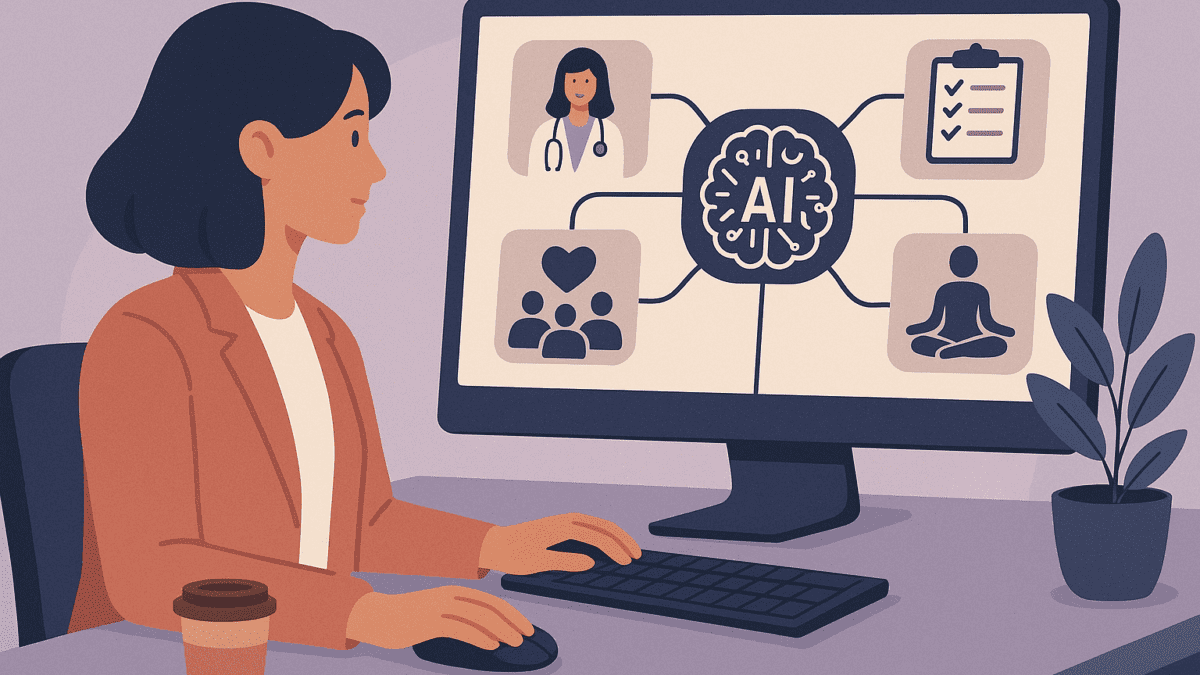AI-Powered Wellness Programs: How HR Tech Is Fighting Burnout in 2025
Table of Contents
Burnout has become one of the biggest threats to employee well-being and productivity. According to Gallup, nearly 44% of employees worldwide reported feeling stressed daily in 2024. As companies move into 2025, HR leaders are realizing that traditional wellness perks like gym memberships or meditation apps are not enough.

Enter AI-powered wellness programs — advanced HR tech solutions that go beyond surface-level perks to deliver personalized, data-driven well-being strategies. By integrating artificial intelligence into wellness initiatives, companies can now detect burnout earlier, personalize support, and create proactive interventions that truly make a difference.
How AI Is Revolutionizing Employee Wellness
- Predictive Analytics for Stress Detection: AI-driven systems analyze patterns in employee behavior — such as work hours, meeting load, email activity, and engagement levels — to identify early signs of stress and burnout. Instead of waiting for employees to reach a breaking point, HR teams can step in proactively.
- Sentiment Analysis and Wellness Chatbots: AI-powered wellness chatbots monitor employee feedback in real time. By analyzing sentiment in surveys, emails, and internal communications, these tools can provide real-time recommendations or escalate issues to HR when necessary.
- Personalized Wellness Recommendations: Unlike generic wellness programs, AI enables tailored solutions. For example:
- A desk worker may get nudges to stretch or reduce screen time.
- A remote employee might receive tips on building social connection.
- A high-travel executive could be offered mindfulness sessions or sleep optimization advice.
Practical Use Cases in 2025
- AI Wellness Dashboards: Provide managers with insights on team well-being without breaching individual privacy.
- Smart Nudges: Remind employees to take breaks, hydrate, or log off after long working hours.
- Virtual Health Assistants: Offer quick access to mental health resources or schedule therapy sessions.
- Integrated Wearables: HR tech platforms sync with smartwatches to monitor stress indicators like heart rate variability.
Benefits for Employers
Adopting AI-powered wellness programs is not just good for employees — it’s a strategic business move:
- Higher Retention: Companies that invest in employee well-being see up to 25% lower turnover.
- Improved Productivity: Healthy, engaged employees perform better and contribute more consistently.
- Stronger Employer Branding: Wellness-driven cultures attract top talent, especially Gen Z and Millennials.
- Reduced Healthcare Costs: Proactive care prevents expensive long-term health issues.
Challenges and Ethical Considerations
While promising, AI-powered wellness programs come with challenges:
- Data Privacy Concerns: Employees may fear surveillance or misuse of personal health data.
- Algorithmic Bias: If not trained properly, AI could misinterpret data or overlook certain demographics.
- Over-Reliance on Technology: Wellness is human-centric — AI should support, not replace, human empathy and HR leadership.
To succeed, HR leaders must balance AI-driven insights with ethical responsibility and transparency.
Conclusion: The Future of Wellness in HR Tech
In 2025, AI-powered wellness programs are no longer optional — they’re essential. Companies that embrace these innovations will not only reduce burnout but also foster a healthier, happier, and more engaged workforce.
As workplace stress rises, HR tech leaders have a unique opportunity to transform wellness from a checkbox perk into a strategic pillar of organizational growth.
Call to Action
💡 Want to stay ahead in HR tech and wellness trends? Keep following HRTechMunch for in-depth insights on how AI and emerging technologies are shaping the workplace of tomorrow.
You May Also Like:Smart Inhalers 2025: How Connected Devices Are Revolutionizing Respiratory Care





